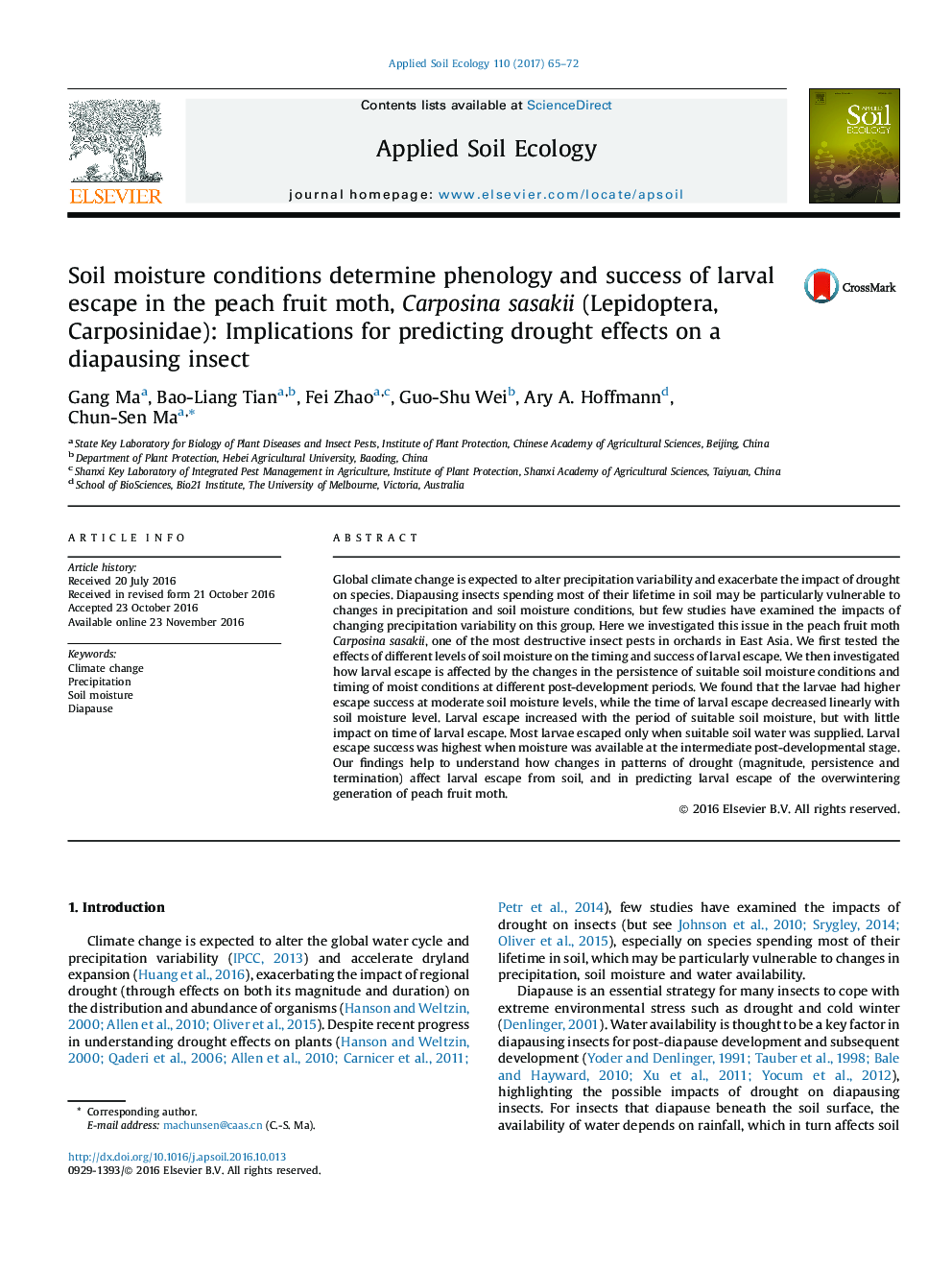| کد مقاله | کد نشریه | سال انتشار | مقاله انگلیسی | نسخه تمام متن |
|---|---|---|---|---|
| 5742773 | 1617773 | 2017 | 8 صفحه PDF | دانلود رایگان |

- We tested how changes in levels, periods and timing of soil moisture affect larval escape of peach fruit moth.
- Larvae had higher escape success at moderate soil moisture levels.
- Larval escape increased with the period of suitable soil moisture.
- Most larvae escaped only when suitable soil water was supplied.
- Changes of drought and precipitation variability affect soil-living invertebrates.
Global climate change is expected to alter precipitation variability and exacerbate the impact of drought on species. Diapausing insects spending most of their lifetime in soil may be particularly vulnerable to changes in precipitation and soil moisture conditions, but few studies have examined the impacts of changing precipitation variability on this group. Here we investigated this issue in the peach fruit moth Carposina sasakii, one of the most destructive insect pests in orchards in East Asia. We first tested the effects of different levels of soil moisture on the timing and success of larval escape. We then investigated how larval escape is affected by the changes in the persistence of suitable soil moisture conditions and timing of moist conditions at different post-development periods. We found that the larvae had higher escape success at moderate soil moisture levels, while the time of larval escape decreased linearly with soil moisture level. Larval escape increased with the period of suitable soil moisture, but with little impact on time of larval escape. Most larvae escaped only when suitable soil water was supplied. Larval escape success was highest when moisture was available at the intermediate post-developmental stage. Our findings help to understand how changes in patterns of drought (magnitude, persistence and termination) affect larval escape from soil, and in predicting larval escape of the overwintering generation of peach fruit moth.
Journal: Applied Soil Ecology - Volume 110, February 2017, Pages 65-72